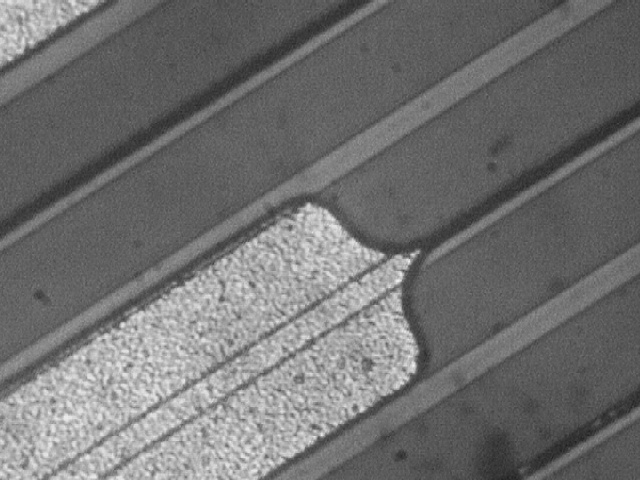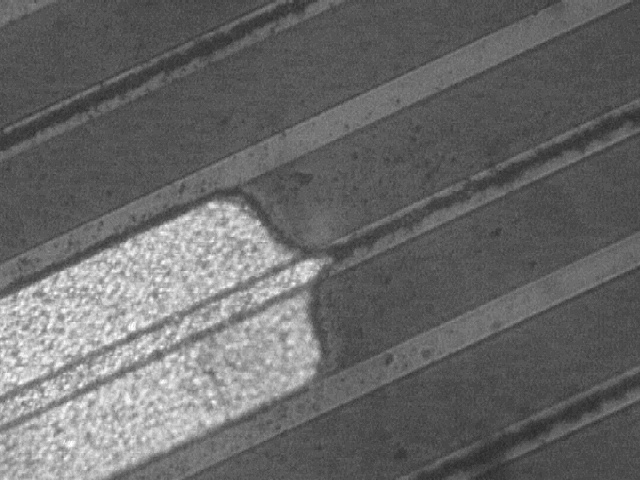L00 Prototype Detector
We received 2 detectors from Micron on March 29th.
Serial numbers:
MSL: 1721-24 T=299 microns
MSL: 1721-3 T=301 microns
Our initial comments are detailed below:
Optical Examination:
Both detectors were observed to have no continuity of the metal above the
readout strips showing one of the main technological challenges of working
with very narrow features. The attached pictures show the sensitivity of
using narrow metal lines to over-etching and also the effects to be expected
from misalignment, given the quoted tolerances of the manufacturer.


Leakage currents
As we have reported to CDF and is availble on the web , our ATLAS
detectors typically show 30-120 nA/cm^2 for Micron detectors from the <100>
6" processing at 1000V with the corresponding figure for Hamamatsu <111> 4"
detectors being 3nA/cm^2 (11 out of 14 detectors) at 1000V.
For the L00 CDF prototypes sent from Micron the quoted value at 1000V
corresponds to 200nA/cm^2 (<111> 6" processing) and, in fact, our measured
values are 50% higher than those quoted for these devices by the company. It
would be interesting to know if the differences seen between the ATLAS
results and the L00 devices are partly due to the very high fields associated
with very narrow implants.
Capacitance Values
Given the lack of metal over the strips, we could not carry out the
conventional measurement of the interstrip capacitance and our results are
based on the rather delicate technique of probing through the contact holes
to the implant. We have, however, been able to determine what are probably
lower limits on the nearest plus further neighbour interstrip capacitances of
0.8pF/cm, which added to the 0.18pF/cm backplane capacitance gives the ~1pF/cm
expected from the usual parameterisation for a very low width/pitch. For
double the width using that parameterisation one would expect an interstrip
capacitance of 1.2 pF/cm, which only contributes at most an extra 3pF for 15
cm detectors (an extra 200 ENC).
A further issue which may relate to narrow implants is the diffences seen
between ATLAS and CMS detectors after irradiation. The very high interstrip
capacitances seen below depletion are not reported by ATLAS and although
these may be ameliorated by using <100>, the effect seen by ATLAS even for
<111> 4" wafers from Hamamatsu is only 10% higher at well below depletion as
long as high frequencies are
considered (as is borne out by noise studies with voltage with LHC speed
electronics).
Final comments on detectors
Once we have agreed on the detector specification (50 microns with
intermediary strips seems OK by us) i.e. length and width, we would like to
start negotiations with Hamamatsu for delivery of final detectors for at
least part of L00.
Back to Material for the VC March 6th
Back to Liverpool
CDF Group Homepage
Maintained by
mcnulty@hep.ph.liv.ac.uk

